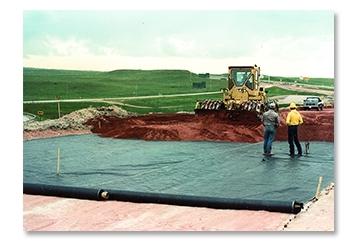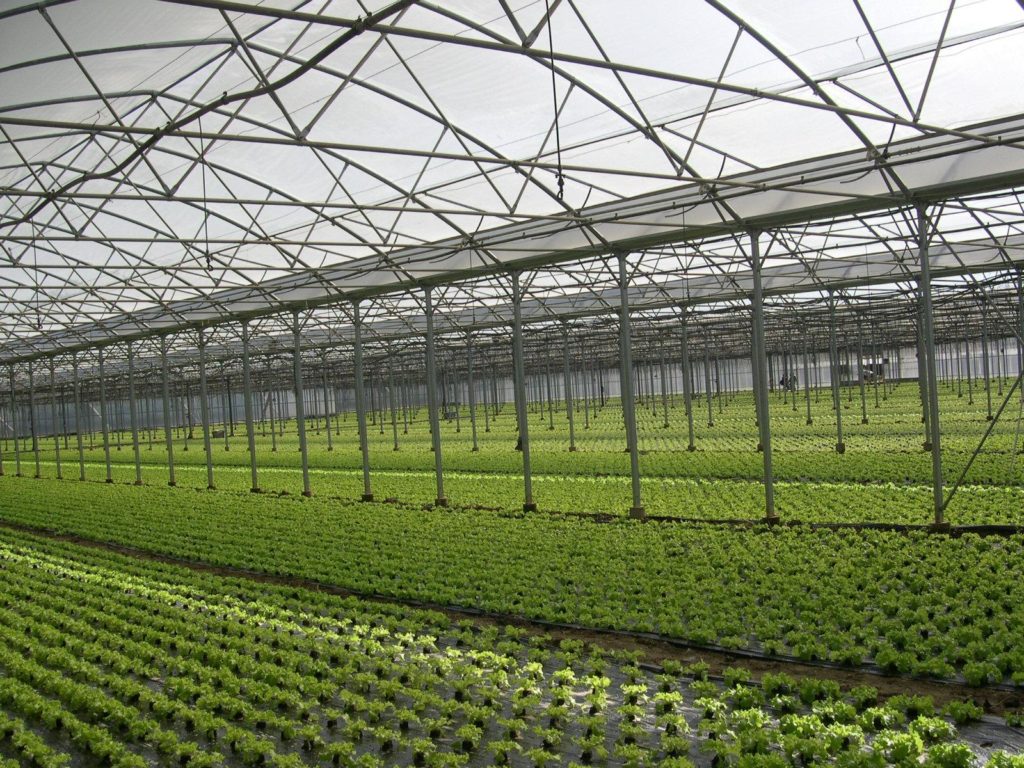Film blowing is used to manufacture thin sheets of plastics from a melted polymer.
Polymer Product Manufacturing Steps
Blown film processing is one of the ways you can process the polymer in the manufacture of polymer products:
General Information
Film blowing is a continuous process. A tube of melted polymer is extruded from an annular die. The polymer is simultaneously stretched and inflated into an elongated bubble by air ring blowers that also cool the polymer. The bubble is then collapsed and wound into rolls such as the geotextile, shown below.

Equipment Design
Blown film may be produced as a single layer of polymer or as multiple layers. Polymer enters the die at the bottom and then flows through spiral channels until it reaches the top, where it is expanded into a bubble shape.
Many systems include film thickness sensors that rotate around the film bubble. When the sensor identifies a thick spot, the control system increases the temperature of the die in that region. The temperature increase causes a local decrease in polymer viscosity resulting in thinner film.
Expansion of the film bubble is achieved by maintaining a slight over-pressure inside the bubble and by the use of an external air ring. Air rings stabilize and cool the film bubble by passing air on its outside. Some manufacturers use an internal bubble cooling device in addition to an air ring to further cool the polymer to its crystallization temperature.
After the film bubble is cooled, it is collapsed into a flat tube so it can be wound into rolls. Collapsers are typically very tall to ensure a gradual change in a bubble shape, minimizing wrinkles in the flat film tube. The slats that guide the film are coated with anti-adhesives to prevent sticking.
The blown film tube is wound or slit at the edges to produce two rolls of flat sheets. The film passes through a number of rollers that adjust the tension and chill the sheet before rolling, to avoid shrinking. Finally, the film is wound onto cardboard tubes for later processing.
Usage Examples
Blown films can be used to produce a wide range of products such as inflatables, laminations, coated fabrics, medical products, membranes, and liners.
Specific examples shown here are greenhouse covers and trampoline material. Other uses include surgical gloves, tank linings, collapsible containers, and food storage bags and wrappers.
(Copyright Lumite, Inc., Gainesville, Georgia)
Advantages
- New technology advances provide cost savings by cutting back on materials used.
- Thinner sheet produced than in cast film or sheet extrusion.
- Flexible die design allows for quick changes between different product lines.
Disadvantages
- Numerous variables influence uniformity of film produced.
Acknowledgements
- Lumite, Inc., Gainesville, Georgia
References
- Colvin, Robert. “Processors Seek to Tame a New Generation of Blown Film Resins.” Modern Plastics May 1997: 62-67.
- Gabriele, Michael C. “Machinery Advances Abet Gains in HDPE Blown Film.” Modern Plastics January 1996: 44-47.
- Halasz, Laszlo. Control Methods in Polymer Processing. Amsterdam, The Netherlands: Elsevier Science Publishers, 1993.
- Leaversuch, Robert D. “New LLDPE’s Cut Costs, Lift Performance of Stretch Films.” Modern Plastics April 1997: 66-69.
- Pearson, J.R.A. Mechanics of Polymer Processing. London: Elsevier Applied Science Publishers, 1985.
Developers
- Amber Ratliff
- Henry Chen
- Jackie Priestley


